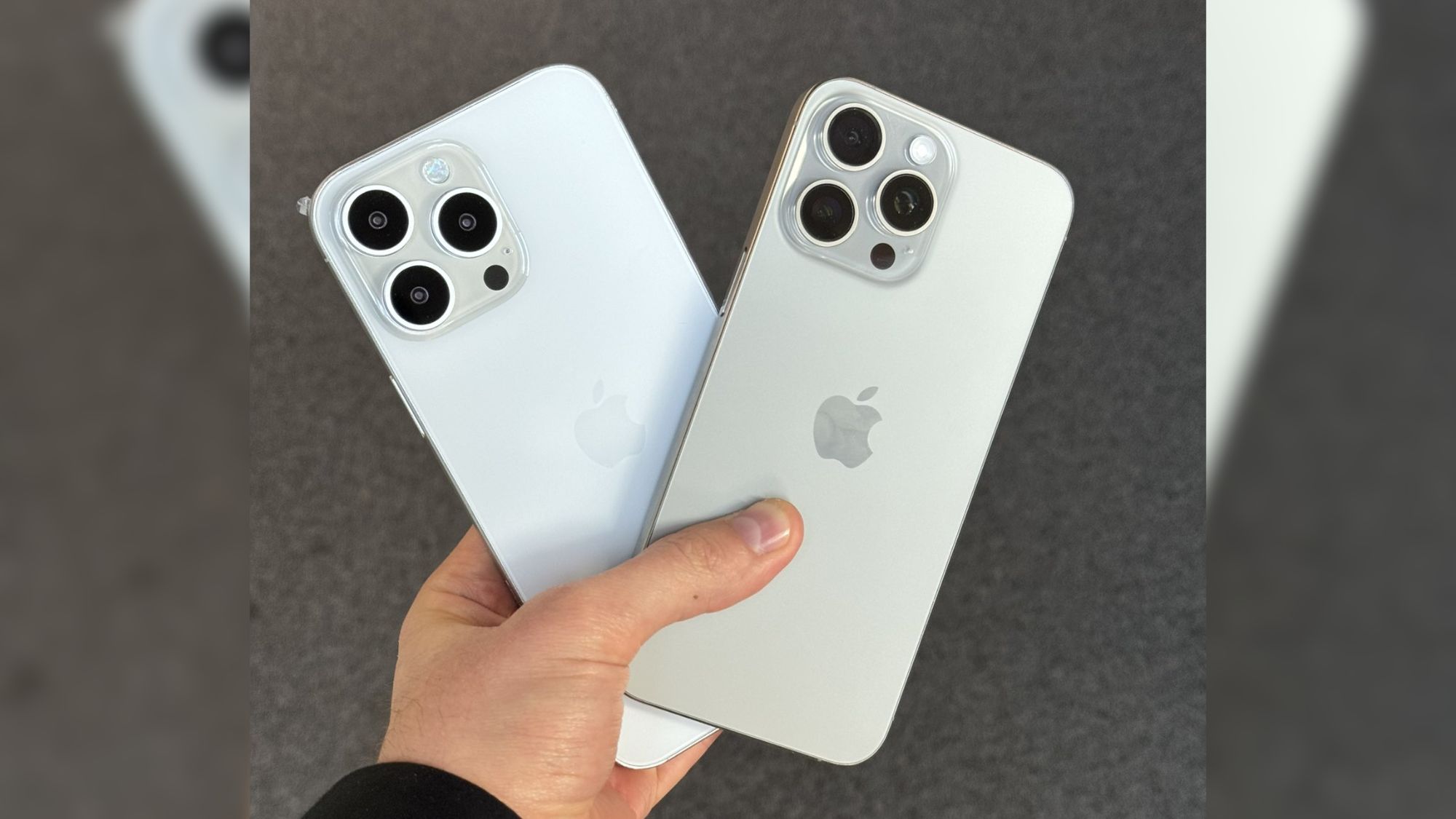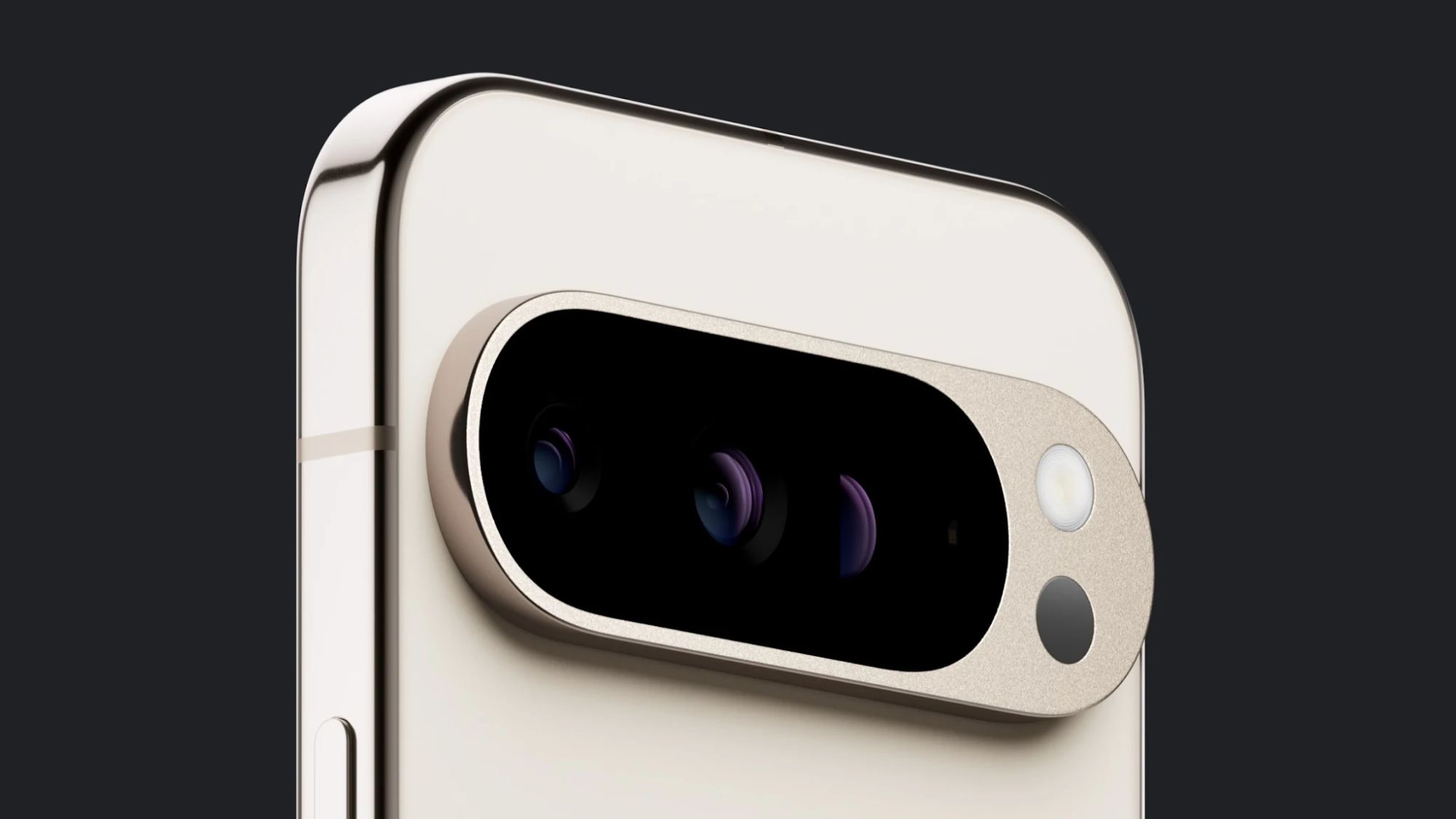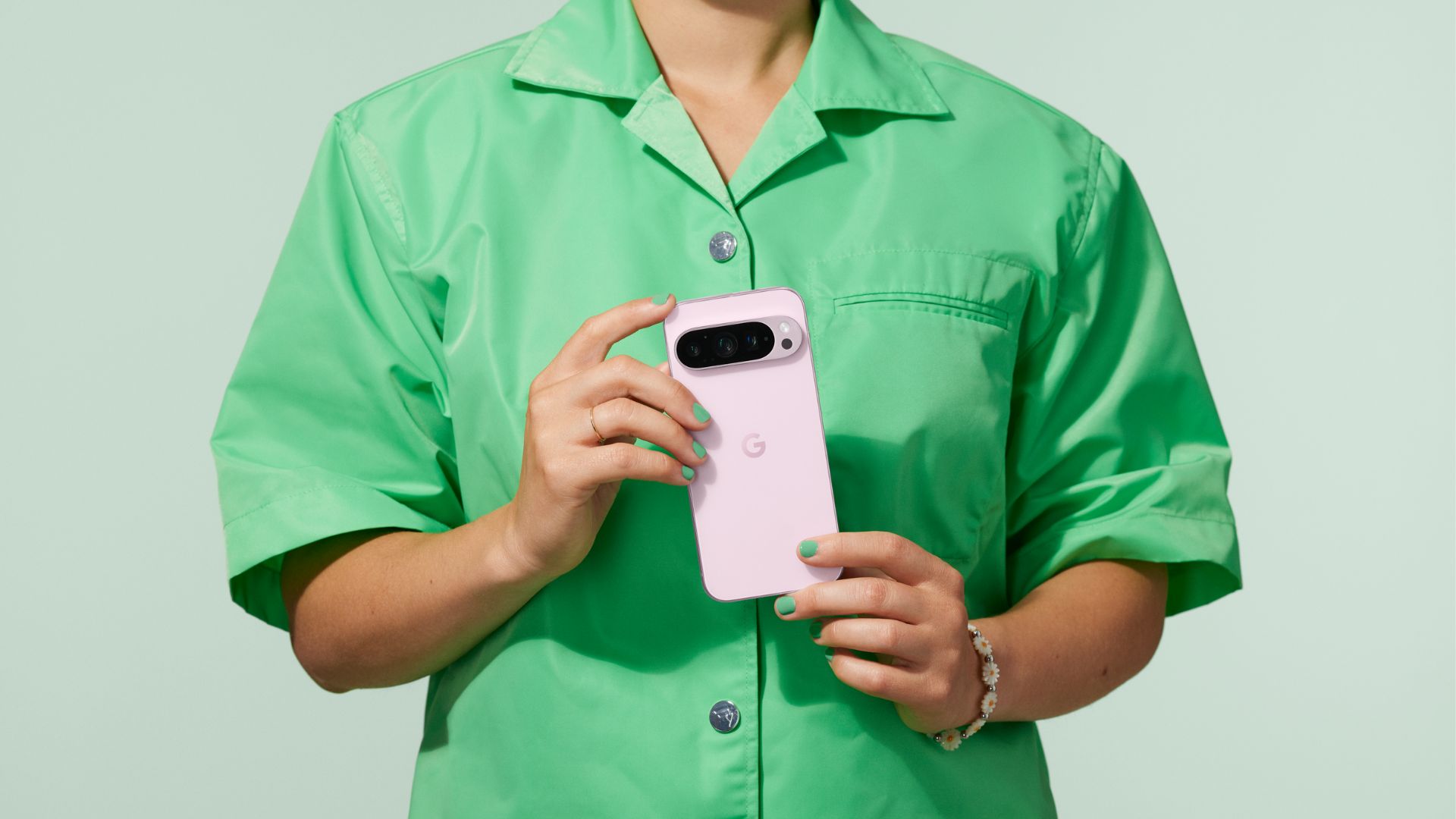iPhone 16 Pro Max vs. Google Pixel 9 Pro XL: Which big phone is the best?
Which big phone comes out on top in the classic Apple vs. Google battle?

If you're in the market for a new big phone, the best competition right now is between Google's just-released Pixel 9 Pro XL vs. Apple's soon-to-be-released iPhone 16 Pro Max.
Of course, there's a big debate between ecosystems. If you're an iPhone user, the iPhone 16 Pro Max already has a slight edge. And if you're an Android user, the Pixel 9 Pro XL probably looks more enticing. In two words: less work.
But for those who want to ignore the operating system differences or want a change, we'll examine each phone's price, specs, design, and cameras to help you decide your winner between Apple's iPhone 16 Pro Max and Google's Pixel 9 Pro XL.
iPhone 16 Pro Max vs. Google Pixel 9 Pro XL: Price
There's no way to say definitively how much Apple will charge for the iPhone 16 Pro Max because it won't be launched until (probably) September. However, based on recent history, we're guessing it'll start at $1,199.
Apple tacked an extra $100 to the iPhone 15 Pro Max compared to its predecessor, so the likelihood that the company would increase the price again one generation later is slim. It could happen, but the chances are low.
If the iPhone 16 Pro Max is priced at $1,199, it'll cost an additional $100 compared to Google's Pixel 9 Pro XL, which has officially launched starting at $1,099.
Winner: Pixel 9 Pro XL
Sign up to receive The Snapshot, a free special dispatch from Laptop Mag, in your inbox.
iPhone 16 Pro Max vs. Google Pixel 9 Pro XL: Specs
| Header Cell - Column 0 | iPhone 16 Pro Max* | Pixel 9 Pro XL |
|---|---|---|
| Price | $1,199 | $1,099 |
| Display | 6.9-inch OLED | 6.8-inch (1344 x 2992) LTPO OLED, 1-120 Hz |
| Storage | 256GB, up to 2TB storage | 128GB / 256GB / 512GB / 1TB |
| CPU | A18 Pro | Google Tensor G4 |
| RAM | 8GB | 16GB |
| Rear cameras | 48MP main wide, 48MP ultrawide, 12MP 5x telephoto | 50MP Octa PD wide, 48MP Quad PD ultrawide, 48MP Quad PD telephoto |
| Front camera | 12MP | 42MP Dual PD |
| Dimensions | 6.48 x 3.04 x 0.32 inches | 6.4 x 3.0 x 0.3 inches |
| Weight | 7.9 ounces / 225 grams | 7.8 ounces / 221 grams |
iPhone 16 Pro Max vs. Google Pixel 9 Pro XL: Design
The Pixel 9 Pro XL and the iPhone 16 Pro Max reportedly feature rounded corners and a protruding camera array with three cameras, but the phones look noticeably different.
For the first time, Google ditched the iconic Pixel camera bar, so the Pixel 9 Pro XL features a pill-shaped camera bumpout that looks quite large. In comparison, the iPhone 16 Pro Max is expected to come equipped with a square-shaped camera array that looks almost identical to that of the Phone 15 Pro Max.

In terms of display, the iPhone 16 Pro Max is expected to debut a large 6.9-inch screen, which would be 0.2 inches more than the iPhone 15 Pro Max's screen. The Pixel 9 Pro XL features a slightly smaller 6.8-inch display.
According to CAD models shared with 9to5Mac, the iPhone 16 Pro Max could have dimensions of 6.48 x 3.04 x 0.32 inches. This isn't much larger than Google's confirmed Pixel 9 Pro XL dimensions: 6.4 x 3.0 x 0.3 inches.
2H24 iPhone 16系列機殼顏色預測iPhone 16 Pro & Pro Max:黑色、白色 (或銀色)、灰色 (應該是原色鈦金屬)、玫瑰iPhone 16 & 16 Plus:黑色、綠色、粉紅、藍色、白色 Apple可能對顏色會有不同的稱呼 (如先前稱呼白色為星光色)。此外,即便顏色名稱與既有機種相同,但看起來可能會不一樣。 --…May 19, 2024
The Pixel 9 Pro XL comes in four different colorways: Obsidian, Porcelain, Hazel, and Rose Quartz.
No colors have been confirmed yet for the iPhone 16 Pro Max, but the biggest rumor is from reliable Apple analyst Ming-Chi Kuo, who says the iPhone 16 Pro Max may come in "black, white (or silver), grey (I think it's natural titanium), [and] rose."
Winner: It's a draw.
iPhone 16 Pro Max vs. Google Pixel 9 Pro XL: Cameras
Google's Pixel 9 Pro XL (or the Pixel 9 Pro) is the best Pixel 9 device you can buy if taking high-quality photos is important to you. We're expecting the iPhone 16 Pro Max to be the same for Apple fans, but we don't have any explicit specs yet on the phone's camera setup.
In front, the Pixel 9 Pro XL is equipped with a 42MP Dual PD selfie camera with autofocus, f/2.2 aperture, and 103° field of view. Turning it around, the Pixel 9 Pro XL features a triple rear camera array with the following cameras:
- 50MP Octa PD wide camera with f/1.68 aperture and 82° field of view
- 48MP Quad PD ultrawide camera with autofocus, f/1.7 aperture, and 123° field of view
- 48MP Quad PD telephoto camera with f/2.8 aperture, 22° field of view, 5x optical zoom, and Super Res Zoom up to 30x

There haven't been many iPhone 16 Pro Max rumors surrounding the camera setup, but we know it'll at least match the setup on the iPhone 15 Pro Max, which includes:
- 48MP main camera with f/1.78 aperture
- 12MP ultrawide camera with f/2.2 aperture and 120° field of view
- 12MP 2x telephoto camera with f/1.78 aperture and second-gen sensor-shift optical image stabilization
- 12MP 5x telephoto camera with f/2.8 aperture and 3D sensor-shift optical image stabilization and autofocus
One of the biggest iPhone 16 Pro Max camera rumors comes from analyst Jeff Pu in a research note covered by MacRumors. Pu claims that Apple's next-gen Pro Max phone could be equipped with a 48MP ultrawide camera, which would be a massive upgrade over the existing 12MP camera.
The Pixel 9 Pro XL has a better selfie camera and a better rear camera array than the iPhone 16 Pro Max.
Winner: To be determined
iPhone 16 Pro Max vs. Google Pixel 9 Pro XL: AI
Both the Pixel 9 Pro XL and the iPhone 16 Pro Max offer advanced AI features, but Google seems to have at least a slight advantage over Apple in this comparison.
Google launched Gemini Nano with the Pixel 8 Pro, which lets you complete many AI-powered tasks on-device without needing an internet connection. Following the announcement of the Pixel 9 series at Made by Google 2024, Google released a blog post that confirms what to expect from the Pixel 9 series.
Each Pixel 9 series phone will be equipped with a Google Tensor G4 chip, "designed with Google DeepMind" and "optimized to run [Google's] most advanced AI models." The Google Tensor G4 will be the first chip to run Gemini Nano with Multimodality, which Google says "helps your phone understand text, images, and audio."
To give Google even more of an edge, the company boosted RAM across all Pixel 9 devices (up to 12GB for Pixel 9 and up to 16GB for Pixel 9 Pro/Pro XL), something we've heard Apple might not do for its iPhone 16 series. Google says this move is to "make sure the AI-powered experiences on your device run smoothly."

Meanwhile, Apple Intelligence isn't ready for the public yet, and it won't even be released with the iPhone 16 Pro Max at launch in September. It isn't expected to be released until iOS 18.1, sometime in October.
Apple plans to split Apple Intelligence features between on-device and cloud-based processing with secure servers. It's not clear yet when or if the iPhone 16 Pro Max will have any fully on-device features.
Check out the full battle between Google Gemini vs. Apple Intelligence for more information.
Winner: To be determined!
Outlook
Without having all the facts, we can't declare a winner in this face-off just yet.
Apple will likely launch the iPhone 16 Pro Max on schedule in September (probably September 10) at an unannounced event. It's impossible to truly compare the two phones until we have definitive info on the iPhone 16 Pro Max and its specs.
That said, from what we know right now about the Pixel 9 Pro XL and what we've heard about the iPhone 16 Pro Max, it seems like the Pixel 9 Pro XL might have an objective edge over the iPhone 16 Pro Max. We'll update this face-off when Apple launches the iPhone 16 series, and we have both phones in hand to compare.

Sarah Chaney is a freelance tech writer with five years of experience across multiple outlets, including Mashable, How-To Geek, MakeUseOf, Tom’s Guide, and of course, Laptop Mag. She loves reviewing the latest gadgets, from inventive robot vacuums to new laptops, wearables, and anything PC-related. When she's not writing, she's probably playing a video game, exploring the outdoors, or listening to her current favorite song or album on repeat.
